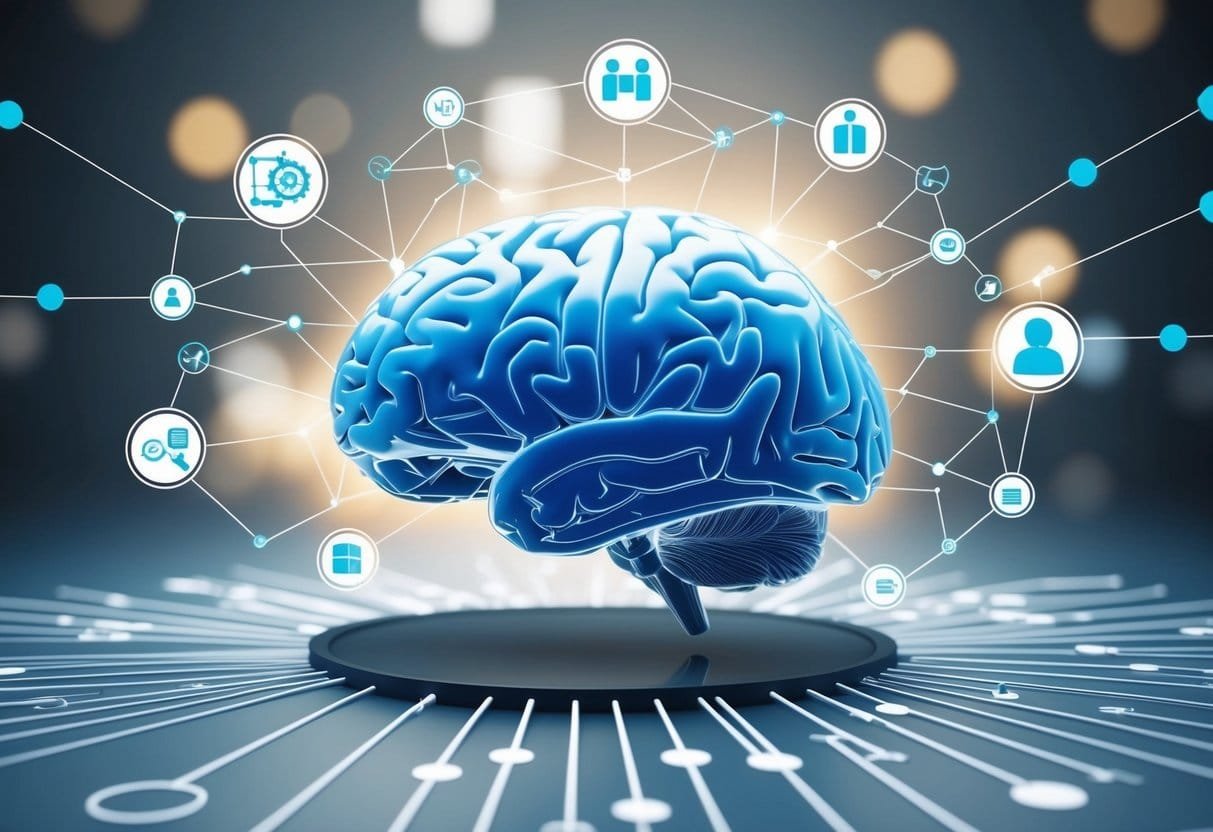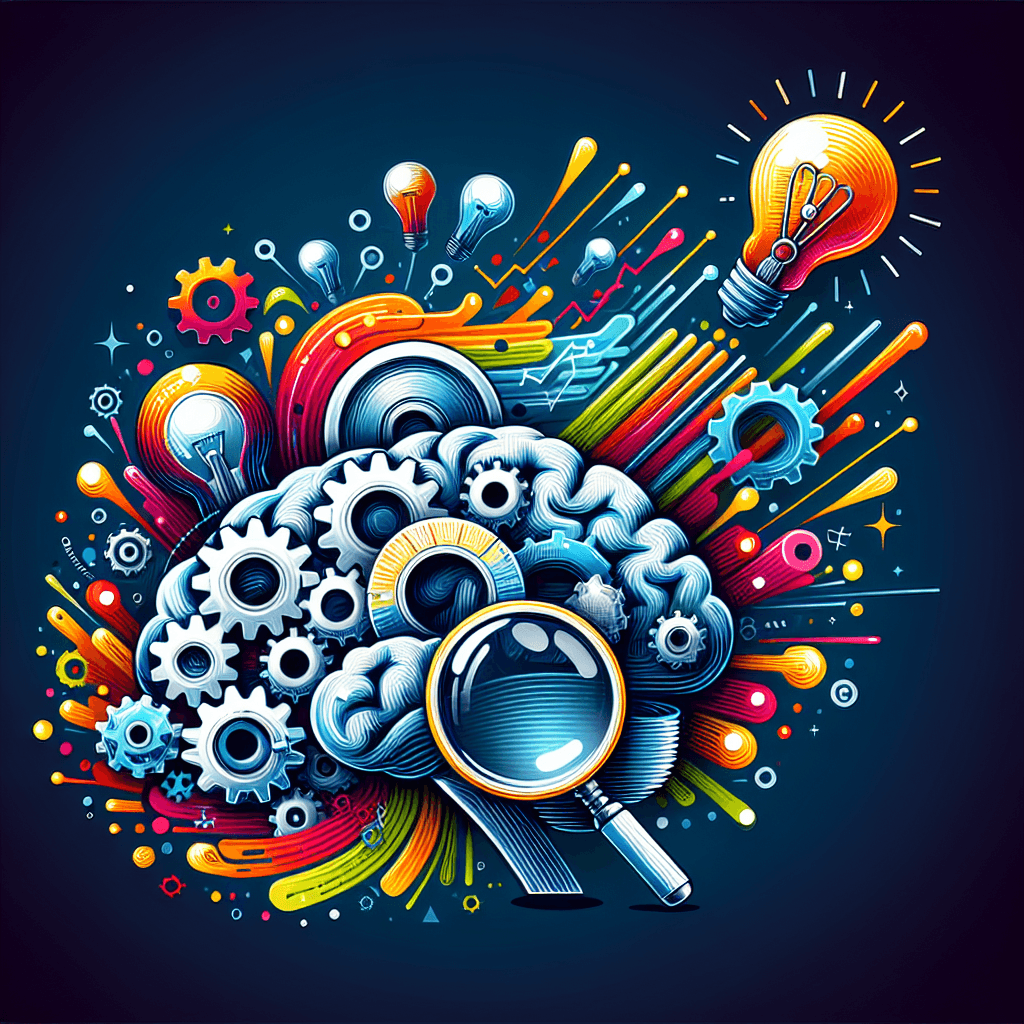Table of Contents
In an age overloaded with information, distinguishing relevant knowledge and organizing it effectively can significantly impact productivity.
“Building a Second Brain” by Tiago Forte equips you with strategies to manage and optimize your digital life using essential principles of knowledge management.
This powerful method allows you to reclaim mental bandwidth by storing, organizing, and utilizing information efficiently, setting you up for success.

The concept revolves around creating a personal system that captures, processes, and retrieves information whenever needed.
By turning your digital presence into a structured and supportive second brain, you can access your ideas and inspirations seamlessly.
This methodology not only enhances your productivity but also unlocks creative potentials you might not have realized.
Using simple technological tools, you can start building this second brain system.
From note-taking apps to project management software, integrating the right tools can transform the way you manage tasks, ideas, and goals.
This approach is designed to support continuous learning and adaptability, helping you stay focused on building knowledge that’s crucial for both personal and professional growth.
Key Takeaways
- Organize knowledge efficiently for improved productivity.
- Utilize technology to build your own second brain system.
- Enhance creativity and adaptability through structured knowledge management.
The Concept of a Second Brain

Developing a Second Brain involves creating a reliable system for storing and organizing personal knowledge, enabling you to efficiently retrieve information and significantly enhance productivity.
This system not only helps to manage digital information but also empowers you to focus on achieving your goals.
Defining a Second Brain
A Second Brain is a concept where you systematically manage the vast amounts of digital information you encounter. It acts as a digital repository for your ideas, notes, and insights.
By capturing and organizing this information, you ensure that it is readily accessible when needed.
This practice enhances your ability to tackle projects by freeing your mental bandwidth from remembering every detail.
You’re able to focus on creative and strategic tasks, knowing that your collected knowledge is well-organized and at your fingertips.
Utilizing tools and technologies across multiple platforms, your Second Brain becomes a trusted source for decision-making and inspiration.
Historical Evolution of Personal Knowledge Management
The development of Personal Knowledge Management systems has roots in traditional note-taking but has evolved significantly with technological advancements.
Influenced by systems like David Allen’s GTD (Getting Things Done), modern approaches integrate digital tools designed to capture and categorize information efficiently.
Early methods emphasized the organization of physical notes and ideas. With digital technology, these have transformed into sophisticated repositories that allow seamless syncing across devices.
This evolution has made it simpler for you to manage information overload, turning scattered data into a cohesive structure that supports your endeavors. Your Second Brain becomes not just a storage solution, but an extension of your cognitive capabilities.
Building the Foundations

Creating a Second Brain requires careful planning and strategy, focusing on effective knowledge management and a personalized system to organize your ideas, notes, and work efficiently.
Essentials of Knowledge Management
A Knowledge Management System is central to organizing your thoughts and resources.
Start by identifying what information is most valuable to you. This includes ideas, insights, and project materials. Use digital tools to categorize and store this information for easy retrieval.
Consider using tags and folders. These help in quickly locating information when you need it.
Tools like Evernote or Notion can be harnessed to manage your knowledge effectively. They allow integration across devices, ensuring your digital repository is accessible anytime, anywhere.
Prioritize updating your system regularly to maintain relevance and accuracy. Consistency is key to a streamlined and efficient knowledge management process.
Setting Up Your Personal System
Your Personal System for organizing should reflect your unique workflow and preferences.
Begin by assessing your daily tasks and projects. Determine what tools or platforms best complement your existing habits.
Select tools that allow for customization and flexibility. Tailor them to support your thought processes and work patterns. Options like Trello for task management or OneNote for note-taking can be excellent choices.
Incorporate structured routines to maintain your system efficiently.
Regularly review and refine your setup to accommodate changes in your projects or goals. An adaptable system ensures it remains a powerful asset in achieving your objectives.
Technological Components

Building a Second Brain requires strategically selecting and integrating digital tools to enhance your ability to capture, organize, and access your knowledge efficiently. The success of your Second Brain depends on these technological components working seamlessly together.
Choosing the Right Technology
Choosing the right tools is crucial in building an effective Second Brain.
Consider using note-taking apps like Evernote or Notion to capture and organize your thoughts. These platforms offer a variety of features such as tagging, search functions, and syncing across devices, which support accessibility and organization.
If collaboration is important, look for apps with shared workspace capabilities.
You might also want to explore cloud storage solutions like Google Drive or Dropbox to store larger files and ensure everything is backed up and easily recoverable.
Security and privacy are essential when dealing with personal and professional information. Ensure that your chosen technologies have strong security measures in place.
Subscription-based options often provide enhanced security features and have better customer support than free versions. The investment in the right technology pays off by offering efficiency and reliability.
Integrating Systems for Synergy
To maximize the potential of your Second Brain, consider integrating your tools for seamless communication between systems.
This can involve setting up automations using applications like Zapier or IFTTT to connect different apps and services. Automation helps reduce manual tasks, saving time and preventing errors.
Utilize APIs to allow different tools to talk to each other, enabling data to flow effortlessly across platforms.
This integration builds a cohesive ecosystem where you can easily access and update information.
Having a suite of interconnected tools also facilitates innovation by allowing you to utilize your data in new and creative ways.
As you integrate your technologies, maintain regular updates and tests to ensure continuous functionality and support for your Second Brain.
Methodologies for Success

To build a successful “Second Brain,” you need effective methods for capturing and organizing information. This involves utilizing structured capture techniques and deploying strategic organization techniques to ensure your knowledge repository remains robust and useful.
Capture Methods
In the process of building your Second Brain, capturing information efficiently is crucial.
Start by identifying key cues in your daily activities that signal useful information you want to save. Use digital tools like note-taking apps to immediately capture these ideas, meetings, or insights.
Prioritize support for cross-platform capabilities, enabling you to collect data from anywhere.
Remember to structure captured content by using simple, concise language and include headings or tags for easy retrieval.
Employ tools like voice memos or quick notes for thoughts on the go, ensuring nothing gets lost. The more consistently you capture, the richer your digital knowledge base will become.
Organization Techniques
Once captured, organizing information makes the repository functional and accessible.
Create distinct folders or categories for different types of content, such as personal projects or work-related tasks. Tools that offer automated filtering or sorting can enhance this process. Your goal is to support effortless retrieval.
Adopt frameworks like PARA (Projects, Areas, Resources, Archives) to systematically manage and store data. By using a consistent structure, you can eliminate clutter and increase cues for recall.
Carefully decide where each piece of information resides, focusing on relevance and ease of access. This organization ultimately frees your mental space for creativity and problem-solving.
Optimizing for Productivity

Harnessing the power of a Second Brain can significantly boost your productivity by systematizing the way you manage information. By focusing on achieving ambitious goals and fostering continuous improvement, you can refine your processes and reach new heights in personal development.
Achieving Ambitious Goals
When aiming for ambitious goals, break them down into manageable parts. A Second Brain allows you to track these components easily, leading to consistent progress.
Utilize digital tools to log the steps involved and prioritize tasks methodically, ensuring you remain on course.
Maintaining clarity on your overall vision is essential. Regularly revisit and revise your objectives to align with your evolving understanding and circumstances.
This helps in mitigating obstacles and sustaining momentum toward achieving what you set out to accomplish.
Continuous Improvement
Continuous improvement relies on consistently refining your processes and learning from past experiences.
By analyzing your knowledge management system, you can identify bottlenecks and areas for enhancement. Implement changes incrementally and monitor their effects to ensure they yield positive results.
Reflection is key to sustained growth. Spend time reviewing your performance, noting successes, and learning from setbacks.
This practice strengthens your problem-solving skills and prepares you for future challenges.
Incorporating feedback loops into your routine will enhance your productivity and personal development efforts over time.
Creative Process and Second Brain
Harnessing the concept of a Second Brain transforms how you interact with and organize creative work, allowing for streamlined management and easy access to your digital repository. By integrating this system, you support your creative projects while enhancing productivity and innovation without needless stress.
Enhancing Creative Work
A Second Brain supports your creative process by providing a structured method to store and recall your ideas, notes, and inspirations.
With easy access to your past thoughts, you can make connections that may inspire new directions in your work.
This helps in reducing the clutter of unorganized ideas, allowing you to focus more on the creative aspects, rather than the logistics.
Imagine having a well-organized archive where each piece of creativity is a click away. Focus and ease of access in your work allow you to spend more time on creating rather than searching.
Leveraging Your Digital Repository
The digital repository of your Second Brain synchronizes across all your devices, ensuring that your creative insights are available whenever needed.
This access ensures that ideas generated on-the-go or during a specific project phase aren’t lost to time or disorganization.
Keeping this repository organized requires a system that fits your unique workflow. Techniques like categorization and using tags can be essential tools, ensuring quick retrieval.
Leveraging this effectively can mean the difference between a stalled project and one that progresses smoothly.
By building a refined digital repository, you foster an environment where creativity is consistently nurtured and supported.
Maintaining and Growing Your Second Brain
Maintaining your Second Brain involves regular review sessions to ensure continued relevance and efficiency. Growth entails expanding the system to manage increasing volumes of information effectively, aiding your personal development.
Regular Review and Maintenance
To keep your Second Brain functional, schedule consistent review sessions.
You can use these sessions to revisit content and ensure that it remains relevant to your current projects and goals. Allocate time weekly or monthly to declutter outdated or unnecessary information.
Tips for Effective Maintenance:
- Prioritize important notes with a tagging system.
- Archive or delete obsolete data to streamline searches.
- Reorganize categories to reflect any changes in your workflow or personal development focus.
Using a simple routine, like dedicating 30 minutes each Sunday, can significantly boost your knowledge management capabilities.
Scaling Your Knowledge Management
As your Second Brain grows, so should your strategies for managing it.
Begin by integrating more robust tools or expand existing ones to handle larger volumes of data.
Approaches to Scaling:
- Use automation tools to capture and sort information.
- Apply advanced search features to locate information quickly.
- Explore collaboration features to co-manage data with others, enhancing both knowledge management and teamwork.
Keeping scalability in mind helps you stay organized as you accumulate more information.
Implement these enhancements to ensure your system supports continuous learning and efficient personal development.
Frequently Asked Questions
Building a Second Brain involves organizing digital information to enhance creativity and productivity. Understanding the core principles and practical tools is essential for effectively implementing this system.
What are the core principles behind the Second Brain methodology?
The core principles include capturing information, organizing it logically, and using it effectively to support your creative and professional endeavors.
These principles help streamline the process of gathering and retrieving information, allowing you to focus more on creating and less on searching.
Can you provide examples of how to apply the Second Brain study method?
You can apply this method by capturing notes from books or articles, organizing project plans, or creating a streamlined task management system.
For instance, summarizing key insights from a book and storing them systematically helps in later retrieval and application to new projects.
Which applications are recommended for implementing the Second Brain approach?
Applications like Evernote, Notion, and Roam Research are popular choices.
These tools offer functionality to capture and organize information flexibly, allowing you to create a system tailored to your unique needs.
What is the typical cost associated with taking a ‘Building a Second Brain’ course?
The cost of taking a ‘Building a Second Brain’ course can vary. It typically involves a one-time fee that grants you access to course materials and community support, often ranging from moderate to higher price points, depending on the level of content and access provided.
How does the ‘CODE’ method facilitate the Building a Second Brain concept?
The ‘CODE’ method stands for Capture, Organize, Distill, and Express.
This approach facilitates the organization and refinement of information, ensuring it is accessible and useful.
It enables you to transform raw information into actionable insights, enhancing productivity and creativity.
What are the benefits of integrating AI into the Second Brain strategy?
Integrating AI allows for more efficient data sorting, suggestion of connections between information, and automation of routine tasks.
This integration can enhance your ability to retrieve important data quickly and identify patterns, ultimately enriching the value you derive from your Second Brain.
Ready to build your second brain and transform your productivity?
Explore these resources:
- “Building a Second Brain: A Proven Method to Organize Your Digital Life and Unlock Your Creative Potential” by Tiago Forte: This is the definitive book on the topic, directly from the creator of the “Building a Second Brain” (BASB) methodology.
- “Getting Things Done (GTD): The Art of Stress-Free Productivity” by David Allen: While not explicitly about a “second brain,” GTD’s principles of capturing and organizing tasks are foundational to any effective PKM system.
- “How to Take Smart Notes: One Simple Technique to Boost Writing, Learning and Thinking – for Students, Academics and Nonfiction Book Writers” by Sönke Ahrens: Explores the Zettelkasten method, a powerful note-taking system that can form a core part of a second brain.
- “Deep Work: Rules for Focused Success in a Distracted World” by Cal Newport: Emphasizes the importance of focused, knowledge-intensive work, which is enhanced by a good PKM system.




